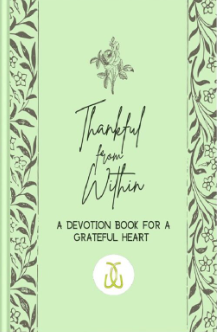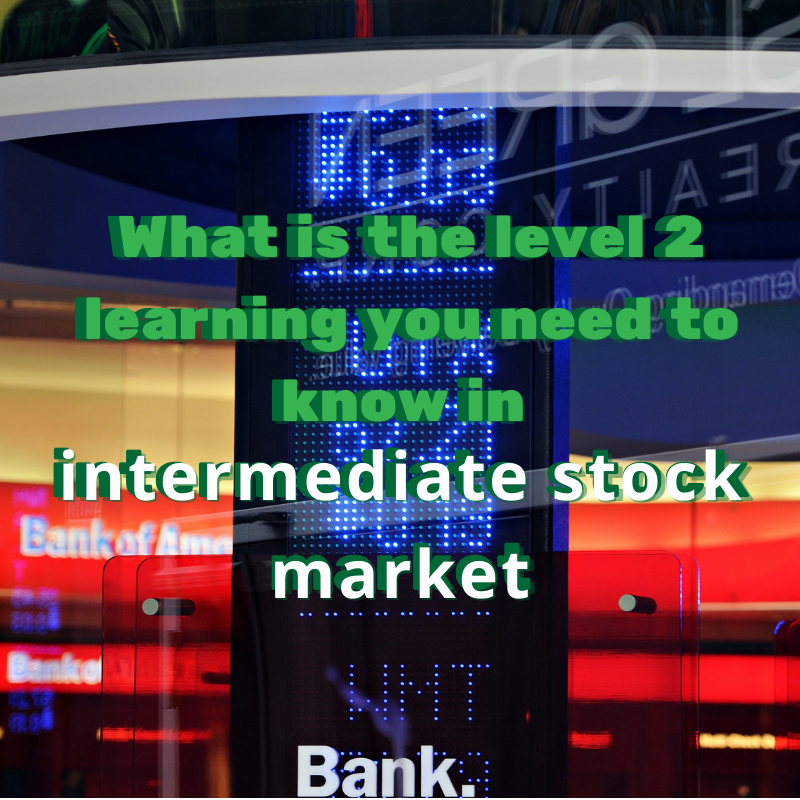Stock Market
Ultimate level 2 learning you need to know in intermediate stock market
Level 2
is a term used by display traders to refer to the quotes that come after the best offer and ask at either end of a spread. When preparing for market data needs, Level 2 and the order book are differentiated more clearly. Determining market data access requirements first requires understanding the different types of market data.
To ensure a meaningful discussion about the objectives, needs, and costs for a more profitable trade strategy, it is even more important to comprehend how access translates into needs for the exchanges’ direct feeds. Market information that includes the range of bid and ask prices for a specific security is referred to as level 2 in general.
The price book and order book, also known as the depth of the book or Level 2, contain all price levels of quotes submitted to an exchange as well as each individual quote. The price book, also known as “market-by-price” or MBP, compiles quotes that are the same price, displaying them all as a single line in the book and one aggregate volume. In order to streamline the view of the price book and offer more reasonably priced access to Level 2 data, several exchanges provide summarised views of the price book, which provide the 5–15 highest bids and 5–15 lowest offers.
The price book can highlight areas of support or resistance for traders by providing an easily accessible view of demand for a security. The order book, also known as “market-by-order” or MBO, on the other hand, offers a more detailed picture of Level 2 data by displaying all quotes at each price level. A security’s depth of book is useful for determining the genuine demand and more precisely predicting how the price will change.
Some experts use the order book as Level 3 market data to differentiate between the specific view of quotes and the aggregate view of a price book. Whatever the language, being aware of the subtleties enables a broker-dealer or asset manager to more accurately appraise their market data requirements and convey those needs to suppliers and connectivity providers.
Instead, Level 2 is occasionally used on trade displays to distinguish between the best bid and offer (BBO) at each exchange and the nationwide best bid and offer (NBBO). Because they don’t distinguish between price levels for bids and asks, all of these views are typically regarded as Level 1 data or top of book. The BBO listed second may not be the second-best bid or offer in the price book, even though the BBO of all 13 exchanges may simulate a price book.
A ledger of ask and bid prices at an exchange can be found in the order and price books. The book is arranged so that the top line item for each represents the BBO, with the highest bid and lowest ask quotes appearing first (or NBBO in a composite price book). A bank or market maker on the exchange that submitted the order is listed with each bid and ask, along with the number of shares or 100-share lots that the order is for.
When volume has gathered, the Level 2 order information displays a weighting of the bids and asks. These points serve as supply and demand thresholds that, depending on the attitude, may be difficult to cross. Trading algorithms that aim to forecast liquidity need this level of specificity.
For instance, if a security’s price is expected to drop, a concentration of bids around a certain price may indicate impending liquidity. While depth-of-book quotes are not submitted to the Security Information Processor (SIP) from the exchanges, Level 2 data must be accessed through direct exchange feeds. Real-time Level 1 quotes can be accessed from the Security Information Processor’s (SIP) Consolidated Tape Association (CTA) and Unlisted Trading Privileges (UTP) feeds.
Direct feeds are exclusive real-time data streams that exchanges provide. The NYSE, Nasdaq, and Cboe Global Markets Inc., three significant exchange families, and their 11 exchanges, handle the majority of quotes and trades in US equities. Every exchange provides direct feeds for the order book and top of the book quotes, and the majority also provides an aggregated price book feed. In order to ensure strategy viability and profitability, it’s crucial to look for cost-effective options because fees frequently vary greatly depending on the depth of book required.
Some companies create their own consolidated book to accommodate for SIP feed latency. To access all market liquidity and submit quotes, market makers or HFTs create a unique best bid and offer (also known as a user-based BBO, or UBBO) in place of the NBBO.
Similar to how market depth aggregates market liquidity into price levels to reveal opportunities for order routing, a consolidated—or “composite”—price book does the same thing. Market depth and the structure of market data typically follow a similar complexity slicing. It is more likely that its trading environment will need specialized hardware and dedicated co-location space as feed requirements and quotation volume rise.
Some brokers or buy-side companies are able to access data via an API or hosted alternative because lower market depth is frequently associated with less sensitivity to latency. Every company must weigh these options, but if this article has caused you to reevaluate the market depth of your strategy, request a consultation with an Exegy market data expert to determine what is best for you.
The quotes that follow the best offer and ask at each end of a spread are referred to as Level 2 by display traders. Level 2 and the order book are distinguished more explicitly in order to prepare for market data requirements. Understanding the various types of market data is necessary before determining the access requirements for that data.
It is even more crucial to understand how access translates into needs for the exchanges’ direct feeds in order to enable a meaningful dialogue. Level 2 market data generally refers to market data that contains the range of bid and ask prices for a particular securities. All price levels of quotations sent to an exchange as well as each individual quote are included in the price book and order book, also referred to as Level 2 or the depth of the book.
The price book, sometimes referred to as “market-by-price” or MBP, gathers quotes that have the same price and displays them all as a single line in the book and one total volume. Several exchanges offer summarized views of the price book, which show the 5–15 highest bids and 5–15 lowest offers, in an effort to simplify the view of the price book and provide more reasonably priced access to Level 2 data.
The price book can help traders identify regions of support or resistance by offering a readily available perspective of security demand. On the other hand, the order book, also referred to as “market-by-order” or MBO, provides a more thorough representation of Level 2 data by showing all quotes at each price level. The depth of book for a security can be used to gauge true demand and make more accurate price forecasts.
To distinguish between a detailed view of quotes and an aggregate view of a price book, some professionals use the order book as Level 3 market data. Whatever the terminology, understanding the subtleties enables a broker-dealer or asset manager to assess their market data requirements more accurately and communicate those needs to suppliers and connectivity providers. To distinguish between the best bid and offer (BBO) at each exchange and the overall best bid and offer, Level 2 is occasionally used on trade displays. All of these views are typically regarded as Level 1 data or top-of-book because they do not differentiate between price levels for bids and asks.
The BBO listed second may not be the second-best bid or offer in the price book, even though the BBO of all 13 exchanges may simulate a price book. A ledger of ask and bid prices at a business can be found in the order and price books. The book’s layout places the BBO as the top line item for each, with the highest bid and lowest ask quotes showing first (or NBBO in a composite price book). Each bid and ask includes the number of shares or 100-share lots the order is for and the name of the bank or market maker on the exchange that placed the order.
The Level 2 order information shows a weighting of the bids and asks once the volume has increased. These levels act as supply and demand ceilings that, depending on one’s mindset. This level of specificity is necessary for trading algorithms that forecast liquidity. A concentration of bids at a particular price, for instance, may signal oncoming liquidity if the price of an asset is anticipated to decline. The Security Information Processor (SIP) does not get depth-of-book quotes from the exchanges, but Level 2 data must be retrieved via direct exchange feeds.
The Consolidated Tape Association (CTA) and Unlisted Trading Privileges (UTP) feeds of the Security Information Processor (SIP), as well as other sources, provide access to real-time Level 1 quotes. Exchanges offer direct feeds, which are unique real-time data streams. The majority of quotes and trading in US equities are handled by three important exchange families—the NYSE, Nasdaq, and Cboe Global Markets Inc.—and their 11 exchanges. Every exchange offers direct feeds for the order book and top of the book quotations, and most of them also offer a feed for the aggregated price book. Because fees frequently vary greatly depending on the depth of book required,
it is imperative to look for cost-effective options in order to ensure strategy viability and profitability. To account for SIP feed latency, some businesses develop their own consolidated book. Market makers or HFTs develop a distinct best bid and offer (also known as a user-based BBO, or UBBO) in place of the NBBO in order to access all market liquidity and submit bids.
A consolidated—or “composite”—price book performs the same function as market depth, which groups market liquidity into price levels to reveal opportunities for order routing. Similar complexity slicing patterns are typically followed by market depth and market data structure. As feed requirements and quotation volume increase, it is more likely that its trading environment will demand specialist hardware and dedicated co-location space.
Because lesser market depth is typically correlated with decreased susceptibility to latency, certain brokers or buy-side organizations are able to obtain data via an API or hosted alternative. Every business must consider these alternatives, but if reading this article has made you rethink the market-depth of your approach, schedule a meeting with an Exegy market data expert to figure out which is ideal for you.
MUST-READ AND SHARE!
2023 Your Practical Wedding Guide
Your Ultimate Access to Kuwait Directories in this COVID-19 Crisis
Investments and Finance Ultimate Guide
OFW FINANCE – Money News Update that you need to read (Table of Contents)
A Devotional for having a Grateful Heart
Stock Investment A Beginner’s Guide
How To Save Money Amidst Inflation
Philippines Best Banks with High-Yield Savings Return
Essentials Before Applying For a Credit Card
Credit Card Starter Guide for Beginners
If you like this article please share and love my page DIARYNIGRACIA PAGE Questions, suggestions send me at diarynigracia @ gmail (dot) com
You may also follow my Instagram account featuring microliterature #microlit. For more of my artworks, visit DIARYNIGRACIA INSTAGRAM



Peace and love to you.